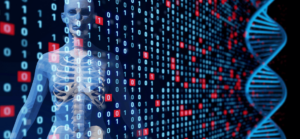Cancer is no longer a disease confined to older generations. In recent years, there has been an alarming rise in cancer diagnoses among men under 50. According to a report by the National Cancer Institute, certain cancers, including colorectal and testicular cancer, have seen a marked increase in younger age groups. For example, colorectal cancer rates have risen by nearly 2% annually over the past two decades. Similarly, a study published in the journal Cancer Epidemiology highlighted that testicular cancer is now the most common cancer in men aged 15-49, with rates steadily climbing globally.
This unsettling trend highlights the need for increased awareness and proactive prevention strategies. If we understand the risks and start taking steps to mitigate them, we can make a significant difference in our long-term health outcomes.
This blog will explore the top cancer risks for guys under 50, focusing on lifestyle factors, genetic predispositions, environmental toxins, and newer concerns like electromagnetic fields (EMFs). By staying informed and adopting healthier practices, we can take control of our health and do our best to reduce our risk of developing cancer.
Key Cancer Risks for Men Under 50
Lifestyle Factors
Lifestyle choices play a significant role in cancer risk. Among the most common contributors are:
- Smoking: Tobacco use remains a leading cause of cancer. Beyond lung cancer, smoking is linked to cancers of the throat, mouth, bladder, and pancreas. Quitting smoking significantly reduces the risk, regardless of how long a person has smoked.
- Alcohol Consumption: Excessive alcohol intake can increase the risk of cancers, including liver, mouth, and esophageal cancer. Moderation is key, with
 most guidelines recommending no more than two drinks per day for men.
most guidelines recommending no more than two drinks per day for men. - Poor Diet: Diets high in processed foods and added sugars are associated with an increased risk of certain cancers, particularly colorectal cancer. Conversely, diets rich in fruits, vegetables, whole grains, and lean proteins can help reduce cancer risk.
- Lack of Exercise: Physical inactivity contributes to obesity, which is a known risk factor for several cancers, including colorectal, kidney, and pancreatic cancers. Regular physical activity helps regulate hormones and improves immune function, both of which play a role in cancer prevention.
Genetic Predispositions
Family history is a critical factor in assessing cancer risk. Certain genetic mutations, such as those in the BRCA1 and BRCA2 genes, are linked to increased risks of prostate and breast cancer in men. Additionally, Lynch syndrome is associated with a higher likelihood of colorectal cancer, and familial melanoma can predispose individuals to skin cancer. Early screenings, genetic counseling, and regular monitoring can help identify these risks and enable preventive measures tailored to individual needs.

Environmental Factors
Exposure to harmful chemicals in everyday life can significantly impact cancer risk:
- Chemicals in Everyday Products: Pesticides, industrial chemicals, and even certain household products contain carcinogens. Limiting exposure to these substances by choosing natural or certified-safe products can reduce risk.
- Workplace Hazards: Men in industries such as construction, agriculture, or manufacturing may be exposed to hazardous substances like asbestos, benzene, and heavy metals. Protective measures and regular health check-ups are essential for individuals in these fields.
Electromagnetic Fields (EMFs)
In recent years, electromagnetic fields (EMFs) from devices like smartphones, Wi-Fi routers, and other electronic equipment have emerged as a topic of concern. Although EMFs are not conclusively proven to cause cancer, growing research suggests potential links to biological effects, such as:
- Oxidative Stress: Prolonged exposure to EMFs may increase oxidative stress in the body, leading to cellular damage and inflammation—both of which are
 risk factors for cancer. For example, a study published in the International Journal of Cell Biology highlights the potential for chronic EMF exposure to alter cellular processes, promoting oxidative damage. Additionally, a review in the International Journal of Oncology found evidence suggesting EMF exposure might influence DNA repair mechanisms, potentially contributing to carcinogenesis.
risk factors for cancer. For example, a study published in the International Journal of Cell Biology highlights the potential for chronic EMF exposure to alter cellular processes, promoting oxidative damage. Additionally, a review in the International Journal of Oncology found evidence suggesting EMF exposure might influence DNA repair mechanisms, potentially contributing to carcinogenesis. - Sleep Disruption: EMF exposure can interfere with sleep patterns, which may weaken the immune system over time and indirectly increase cancer risk.
Experts like Dr. Devra Davis, a renowned epidemiologist, emphasize the importance of further research into EMFs, noting that the massive rise in exposure levels over the past two decades warrants careful monitoring. While the long-term effects remain under investigation, these findings underline the need for proactive measures to minimize exposure.
How to Reduce Your Risks
Adopting a Healthier Lifestyle
- Diet and Nutrition: Focus on a balanced diet rich in antioxidants, fiber, and healthy fats. Reduce consumption of processed foods and limit red meat intake.
- Exercise: Aim for at least 150 minutes of moderate aerobic activity or 75 minutes of vigorous activity per week.
- Stress Management: Chronic stress can weaken the immune system. Techniques like meditation, yoga, and deep breathing can help.

Regular Check-Ups and Screenings
Early detection saves lives. Regular screenings, especially for colorectal, prostate, and skin cancers, can catch issues before they become severe. Discuss family history and risk factors with a healthcare provider to determine an appropriate screening schedule.
skin cancers, can catch issues before they become severe. Discuss family history and risk factors with a healthcare provider to determine an appropriate screening schedule.
Minimizing Exposure to Environmental Risks
- Chemicals: Choose organic produce, avoid harsh chemicals in cleaning products, and use natural personal care items when possible.
- EMFs: Practical strategies to reduce EMF exposure include limiting screen time, using speakerphone or hands-free devices, and maintaining a safe distance from electronics during sleep.
- EMF Protection Solutions: Aires Tech offers the most legitimate solution we’ve seen for personal EMF protection. Their scientifically validated innovations in technology harmonize electromagnetic frequencies, reducing potential biological harm. Integrating these devices into your life can provide a much-needed layer of safety in our tech-centered world.

Conclusion
Proactively addressing cancer risks is crucial for all of us, especially before we get up to 50 years of age. By adopting healthier habits, staying informed about genetic predispositions, and minimizing exposure to environmental hazards, individuals can significantly reduce their cancer risk.
To start reducing your cancer risk today, consider these simple steps: make time for regular health check-ups, clean up your diet, get some physical activity each day, and do everything you can to reduce your exposure to environmental hazards like EMFs and chemicals. Every small change adds up to a significant impact over time.
Taking control of your health begins with informed decisions and consistent effort. Also, by addressing these risk factors, you’re not just improving your odds against cancer but also uplifting your overall quality of life. Your health is your most valuable asset guys – protect it well.




 risk factors for cancer. For example, a
risk factors for cancer. For example, a 





